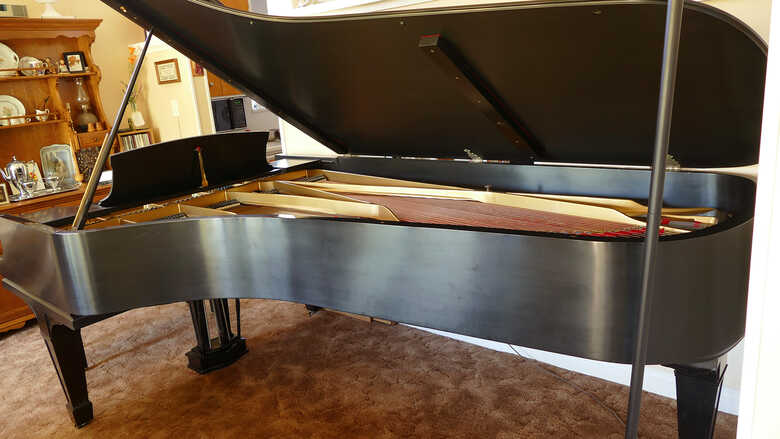
 Steinert 9' Concert Grand for sale - Rebuilt and Refinished
Steinert 9' Concert Grand for sale - Rebuilt and Refinished

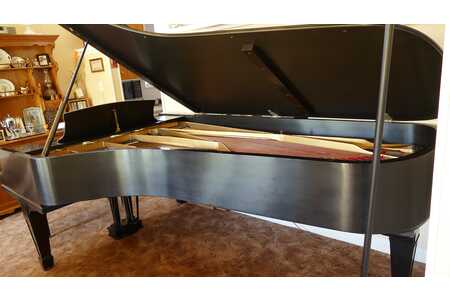
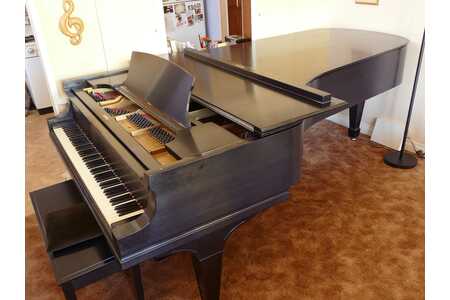
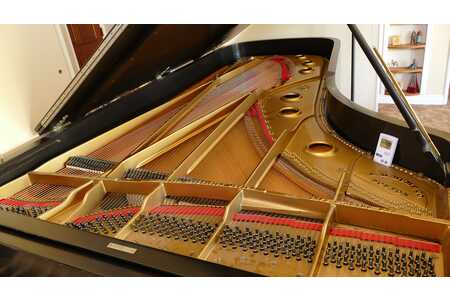
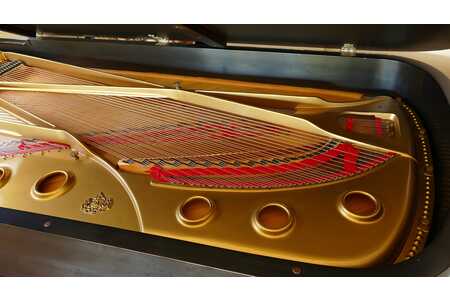
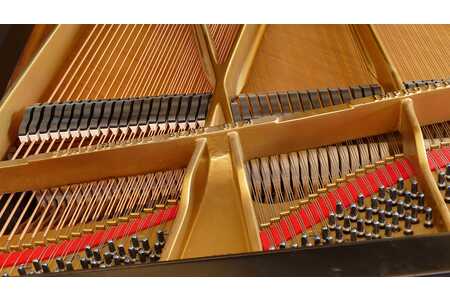
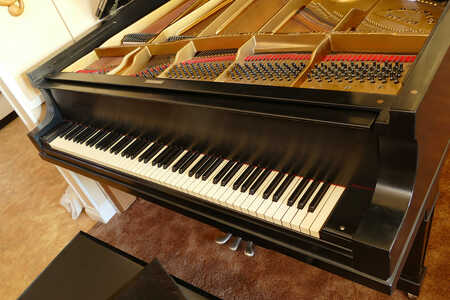
This is a very rare and unique 1915 9' Steinert Concert grand, that has been rebuilt just recently (in 2020 - new pinblock, restrung, new damper felts) and was refinished previously (back in the 1970's). It is a satin ebony (black) finish and the finish still looks quite good. (See photos.) The hammer felts were replaced, also, some years ago, but have not been played a lot and still look almost like new. The action has been reconditioned and regulated and new key felts were installed in the 2020 restoration. It is a high quality Wessel, Nickel, and Gross action - the same type that was used in the original Boston Mason & Hamlins. Steinert had close ties with both Steinway, and Mason and Hamlin, -and many pianists feel the Steinert grands have some of the best qualities of both.
For those unfamiliar with the Steinert brand, a brief history is in order.
Morris Steinert (1832-1912) was a very successful Steinway dealer (and one of the country's oldest Steinway dealers, -since 1869) in the New England area of the Eastern United States, and he was also one of the major pioneers of the early piano industry in the greater Boston area and New England. At one time he had up to 42 music stores in major cities in the Northeastern United States, and he had sufficient success with his piano and music business that he was later able to build his own pianos and put his name on them. Because Steinert greatly admired the Steinway piano and its design, many of these pianos were very close copies of equivalent size Steinway models, are considered extremely high quality instruments, and are also a great value, and are frequently rebuilt and restored. Pianists, piano technicians and rebuilders, especially in the New England area, are usually very familiar with Steinert pianos and know of their quality. Like Steinway's, Steinert's was also a family business: Morris Steinert had 9 children and employed his seven sons in helping to manage his many stores throughout the New England area, -and also his piano factories. Steinert's is still in business today, as a Steinway dealer, in the Boston, MA, area, (although they stopped making the Steinert pianos in 1932) -and you can look up their illustrious history online.
Around 1903, Steinert was successful enough in his piano and music businesses to purchase two piano factories in Massachusetts, and started manufacturing his own pianos, which initially went by various brand names, including Hume, Jewett, Woodbury, and Curtis, but ultimately in 1916 he got permission from Steinway to use his own name (Steinert) on the pianos. (Initially Steinway was concerned the two names were too close, (and also that the design and construction and look of the pianos was too close) for a dealer also trying to sell Steinway pianos, and was concerned there would be brand confusion (-hence the Hume and Jewett trade names etc. on many of the earlier pianos-) -but later, Steinway relaxed the restriction and allowed Steinert to use his own name on the pianos. This particular piano has the Hume trade name, one of several used by Steinert, engraved on the plate, but like all the other pianos from Steinert, was built by Steinert and is virtually identical in design and materials to the pianos of 1916 and later that actually use the Steinert name on the fallboard and the plate.)
The type of design, construction, and materials used on the Steinert were very similar to that of the Steinway. Technicians who specialize in restoring both vintage Steinert and Steinway pianos often claim that Steinerts are as good as (-or better than-) the Steinway. Because they were never made in large numbers (only between about 300-700 each year), Steinert pianos have become sort of a collector’s item and a “cult” classic, especially in the New England area. (Up to now it has been sort of a "best kept secret" in the piano world.) Gradually, though, through the internet and other sources, pianists and rebuilders all over the U.S. are becoming more familiar with the Steinert name. The piano brand has not up to now been as well-known here on the West Coast of the U.S., but is better known back East where Steinert had his many music stores during the early part of the 20th century, -and the brand is generally known among pianists who have "been around”.
The sound quality is very similar to that of the Steinway - an enormous bass, a powerful midrange, and a clear singing bell-like top end, with tons of rich harmonics and a wide palette of colors and timbres from ppp to fff. If you have a large concert hall or a large home you want to fill with sound, this piano will definitely fill the bill.
In short, if you are looking for a Steinway-quality concert grand but don't quite have the budget for the Steinway name, you really owe it to yourself to give this piano a try. I think you can see from the photos that the look and construction are very similar.
Additional information, recent appraisal, etc. available on request.
Asking $20,000. /Offer
(New Steinway Model D Concert grands in the basic satin ebony finish are now going for $198,400. Used or rebuilt Steinway Model D's in good playable condition are going for $50K to 100K. This piano is VERY similar in quality and sound.)
Click on the "Contact Seller" button if you would like to know more about, or see and try out this gorgeous instrument.
For those unfamiliar with the Steinert brand, a brief history is in order.
Morris Steinert (1832-1912) was a very successful Steinway dealer (and one of the country's oldest Steinway dealers, -since 1869) in the New England area of the Eastern United States, and he was also one of the major pioneers of the early piano industry in the greater Boston area and New England. At one time he had up to 42 music stores in major cities in the Northeastern United States, and he had sufficient success with his piano and music business that he was later able to build his own pianos and put his name on them. Because Steinert greatly admired the Steinway piano and its design, many of these pianos were very close copies of equivalent size Steinway models, are considered extremely high quality instruments, and are also a great value, and are frequently rebuilt and restored. Pianists, piano technicians and rebuilders, especially in the New England area, are usually very familiar with Steinert pianos and know of their quality. Like Steinway's, Steinert's was also a family business: Morris Steinert had 9 children and employed his seven sons in helping to manage his many stores throughout the New England area, -and also his piano factories. Steinert's is still in business today, as a Steinway dealer, in the Boston, MA, area, (although they stopped making the Steinert pianos in 1932) -and you can look up their illustrious history online.
Around 1903, Steinert was successful enough in his piano and music businesses to purchase two piano factories in Massachusetts, and started manufacturing his own pianos, which initially went by various brand names, including Hume, Jewett, Woodbury, and Curtis, but ultimately in 1916 he got permission from Steinway to use his own name (Steinert) on the pianos. (Initially Steinway was concerned the two names were too close, (and also that the design and construction and look of the pianos was too close) for a dealer also trying to sell Steinway pianos, and was concerned there would be brand confusion (-hence the Hume and Jewett trade names etc. on many of the earlier pianos-) -but later, Steinway relaxed the restriction and allowed Steinert to use his own name on the pianos. This particular piano has the Hume trade name, one of several used by Steinert, engraved on the plate, but like all the other pianos from Steinert, was built by Steinert and is virtually identical in design and materials to the pianos of 1916 and later that actually use the Steinert name on the fallboard and the plate.)
The type of design, construction, and materials used on the Steinert were very similar to that of the Steinway. Technicians who specialize in restoring both vintage Steinert and Steinway pianos often claim that Steinerts are as good as (-or better than-) the Steinway. Because they were never made in large numbers (only between about 300-700 each year), Steinert pianos have become sort of a collector’s item and a “cult” classic, especially in the New England area. (Up to now it has been sort of a "best kept secret" in the piano world.) Gradually, though, through the internet and other sources, pianists and rebuilders all over the U.S. are becoming more familiar with the Steinert name. The piano brand has not up to now been as well-known here on the West Coast of the U.S., but is better known back East where Steinert had his many music stores during the early part of the 20th century, -and the brand is generally known among pianists who have "been around”.
The sound quality is very similar to that of the Steinway - an enormous bass, a powerful midrange, and a clear singing bell-like top end, with tons of rich harmonics and a wide palette of colors and timbres from ppp to fff. If you have a large concert hall or a large home you want to fill with sound, this piano will definitely fill the bill.
In short, if you are looking for a Steinway-quality concert grand but don't quite have the budget for the Steinway name, you really owe it to yourself to give this piano a try. I think you can see from the photos that the look and construction are very similar.
Additional information, recent appraisal, etc. available on request.
Asking $20,000. /Offer
(New Steinway Model D Concert grands in the basic satin ebony finish are now going for $198,400. Used or rebuilt Steinway Model D's in good playable condition are going for $50K to 100K. This piano is VERY similar in quality and sound.)
Click on the "Contact Seller" button if you would like to know more about, or see and try out this gorgeous instrument.
| Price: | $20,000 USD |
|---|---|
| Ad #: | 51120 |
| Manufacturer: | Steinert |
| Model: | D |
| Serial #: | 11983 |
| Year: | 1915 |
| Length: | 9' |
| Finish: | Satin |
| Color/Wood: | Ebony |
| City/State: |
Walnut Creek, California Show Map |
| Posted: | 07/16/2024 |
| Views: | 1297 |
Buy safely with our Free Escrow Service >
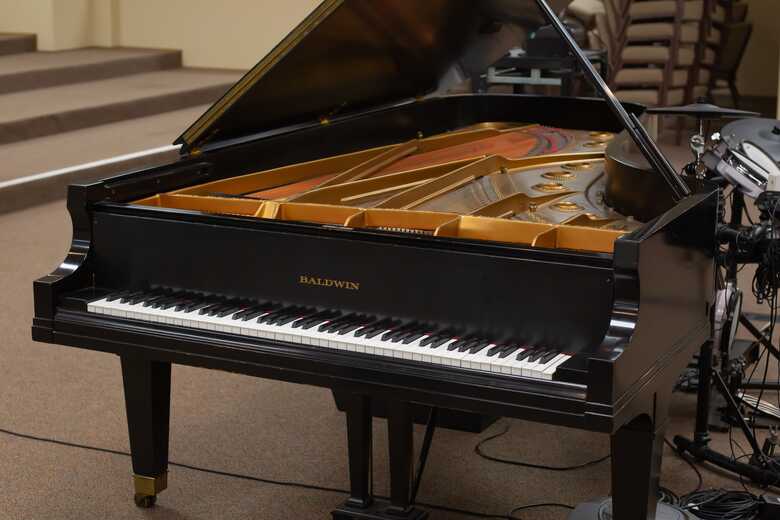
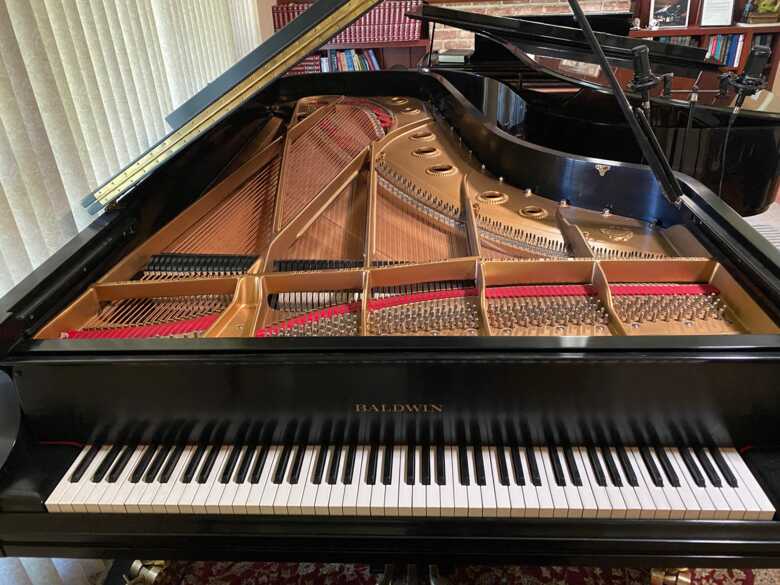
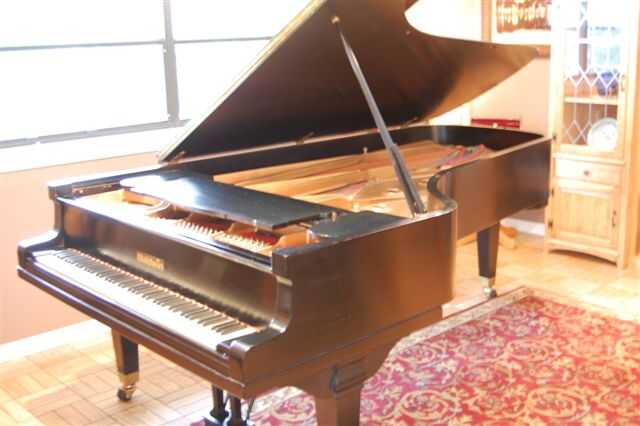
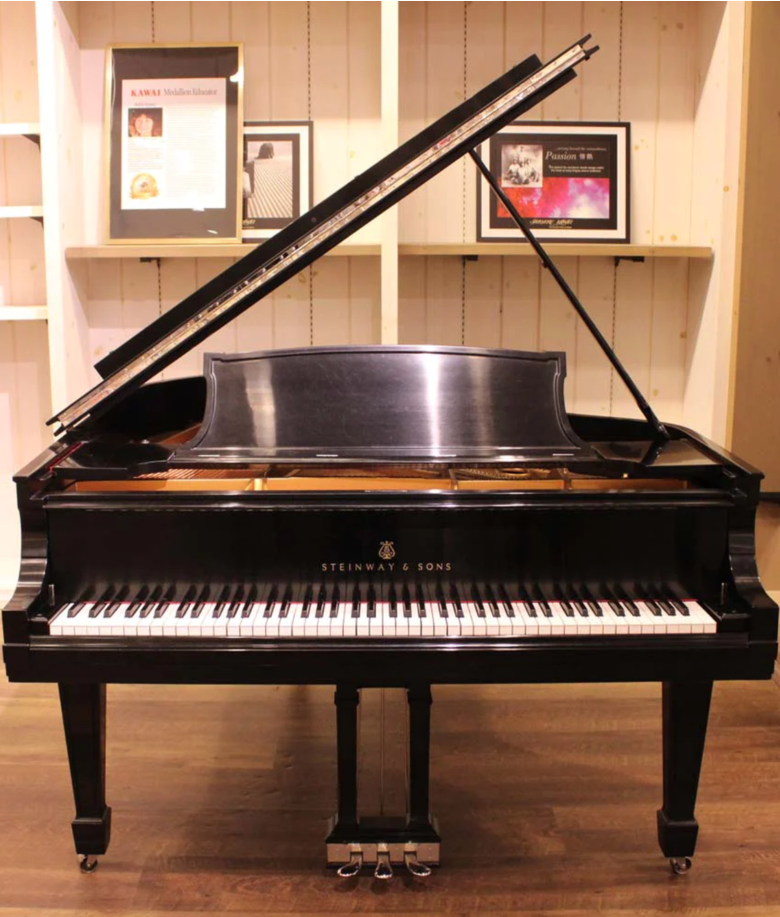
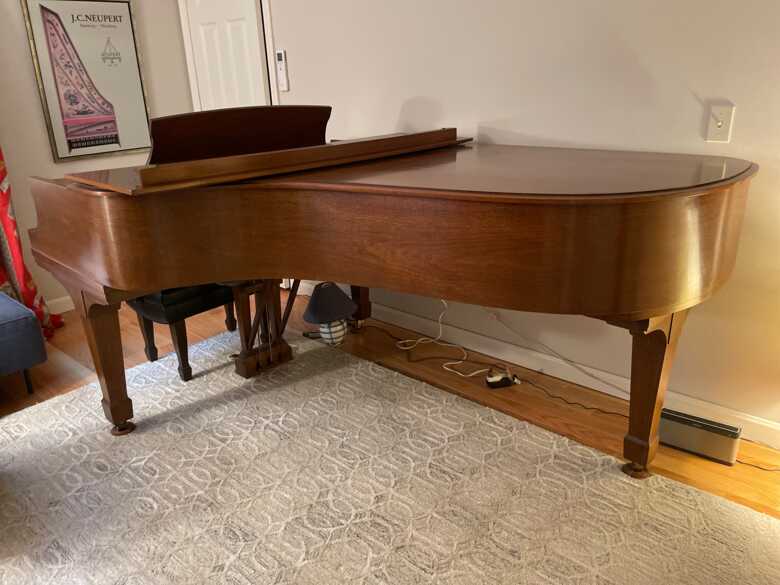


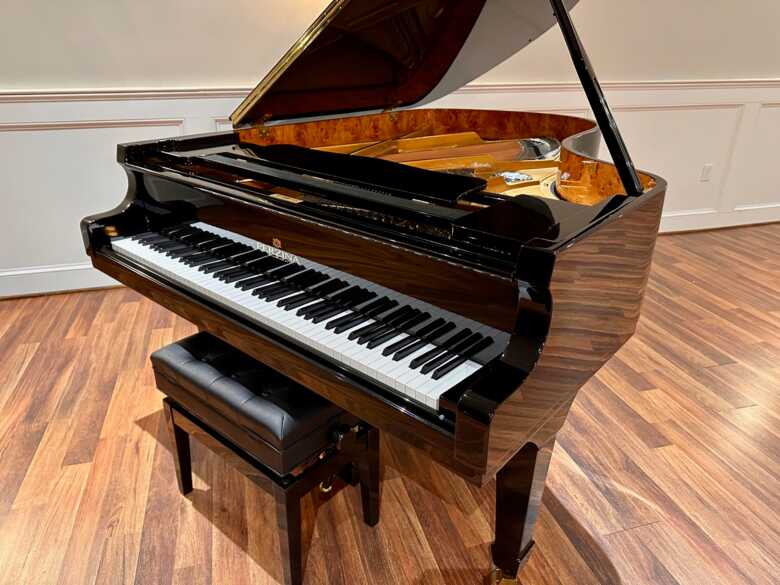

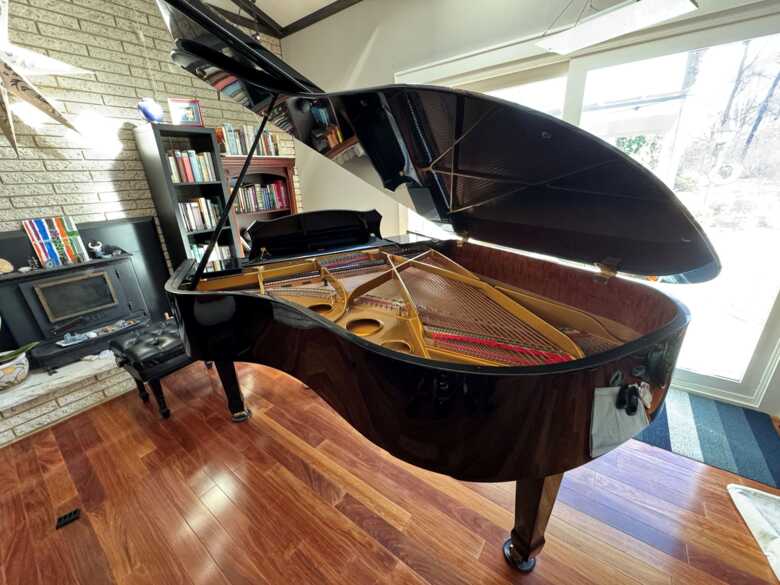
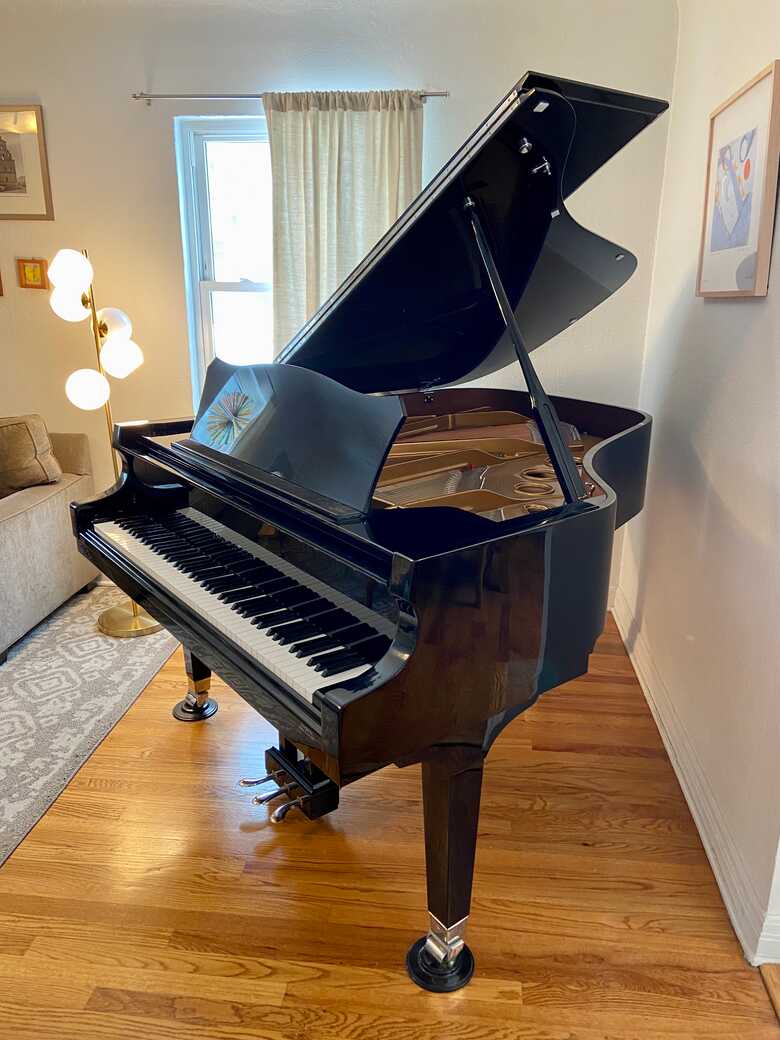
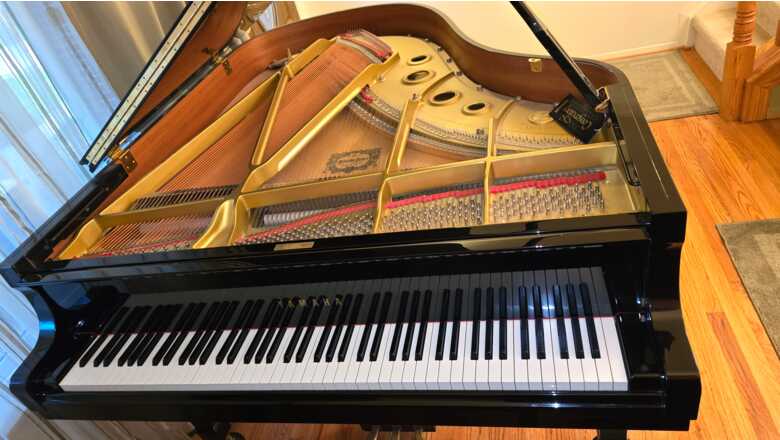

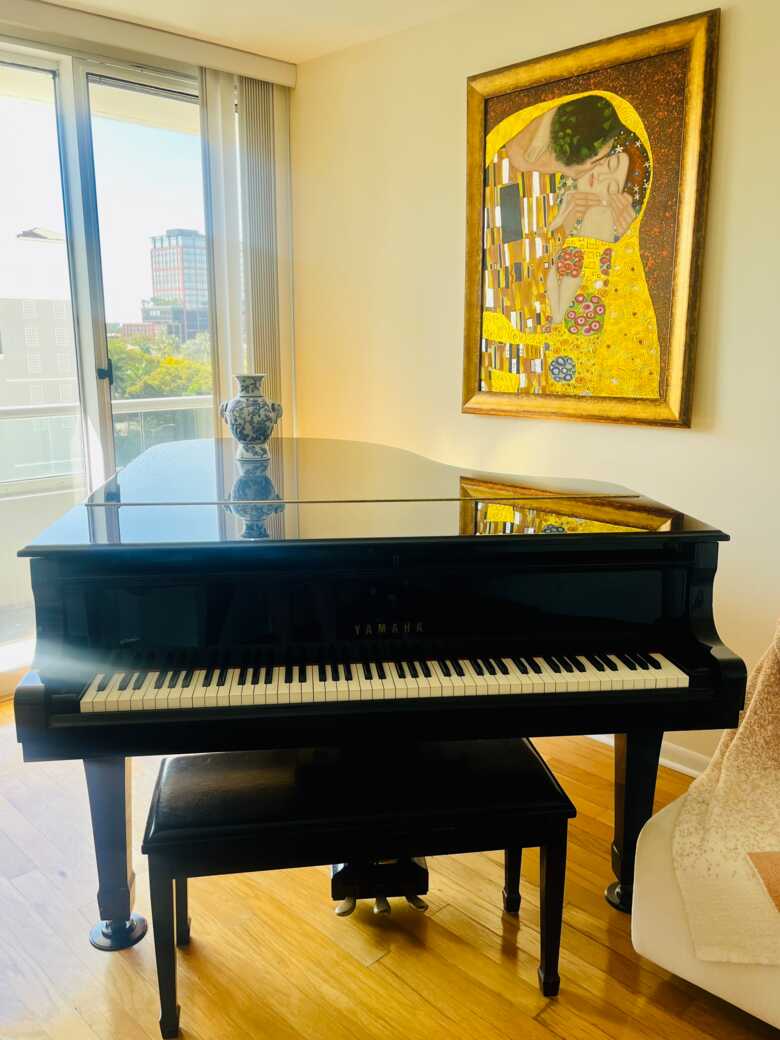
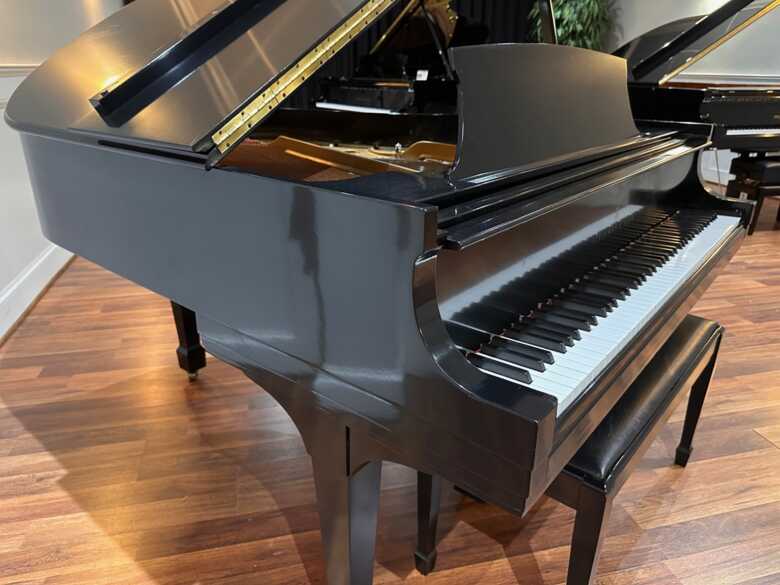

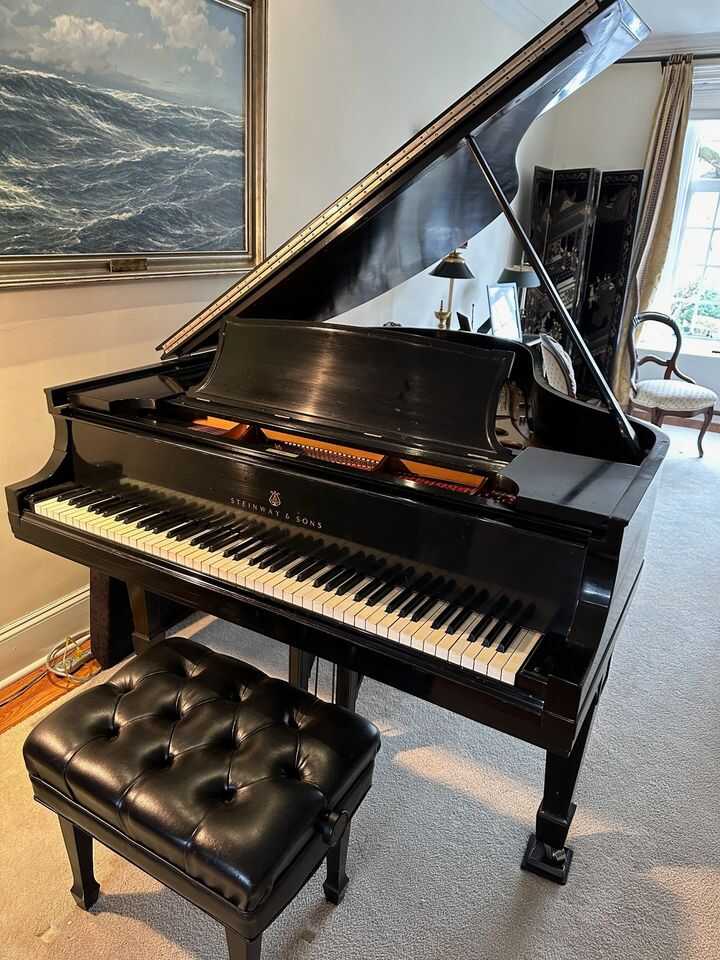
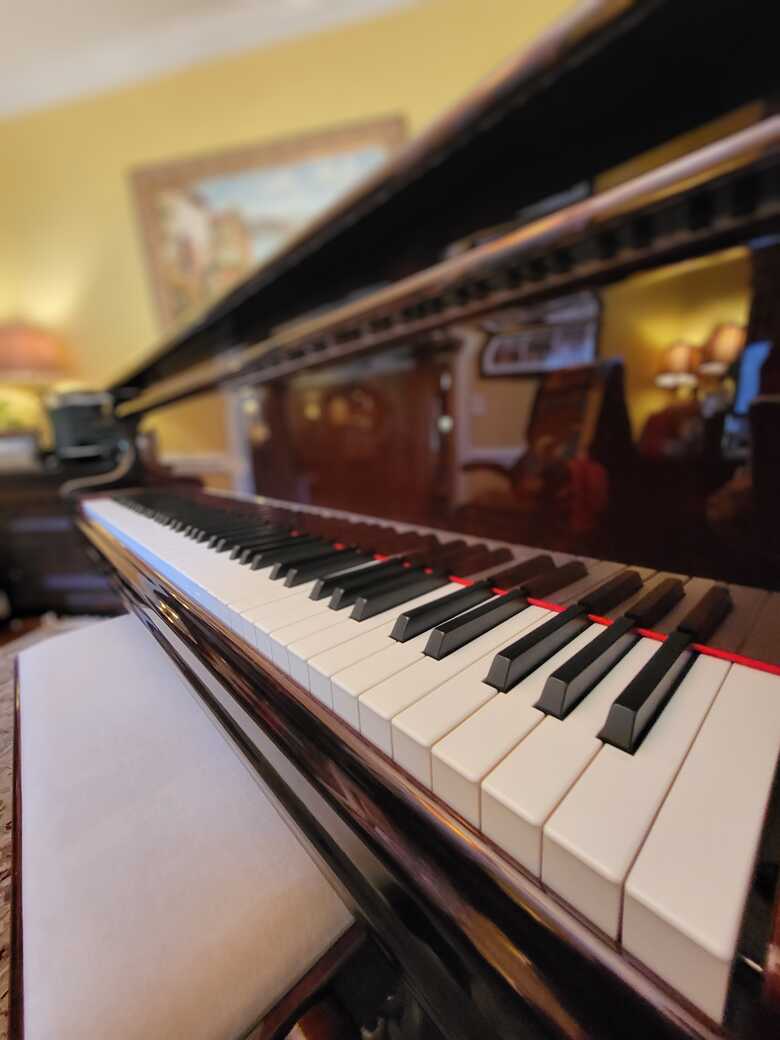
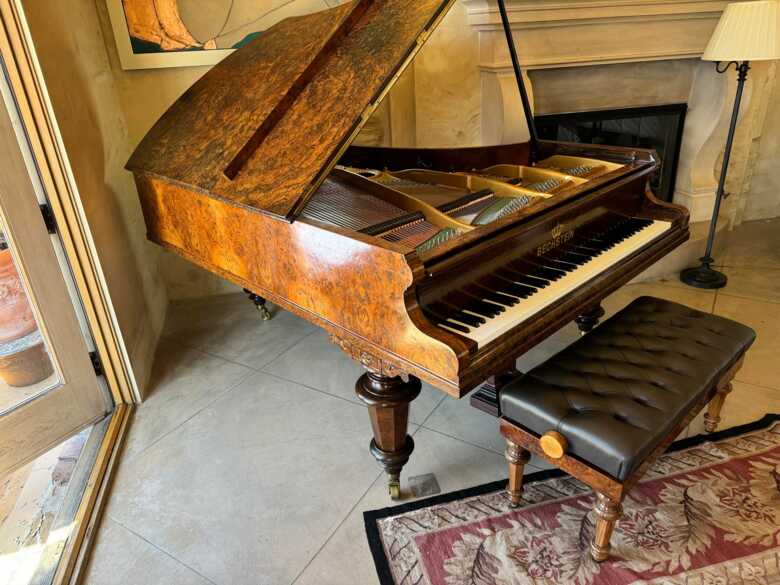



 Resources
Resources 


